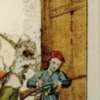
Owen Holland, “‘These Christs that die upon the barricades’: Victorian Responses to the Paris Commune”
The Paris Commune of 1871 provoked several different kinds of reaction in Victorian Britain during the fin de siècle. William Morris and Oscar Wilde (amongst others) celebrated the Commune in their poetry and political writings, re-assessing the event’s meaning in the context of the 1880s socialist revival, while the republicanism of Algernon Charles Swinburne led him to adopt a more hostile attitude in the immediate aftermath of the revolution. Several other writers sought to think through their confusion in response to the Commune, including John Ruskin, Gerard Manley Hopkins and George Gissing, but they all did so against the consistent pressure of conservative reaction, exerted in the form of periodical and newspaper commentary, and sensationalised misrepresentation of the Communards’ deeds and aims. This article surveys some of the main contours of the Commune’s discursive afterlives in Britain, arguing that the British response was characterised by multiple forms of political and aesthetic contestation.
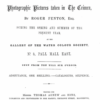
Peter H. Hoffenberg, “The Official Opening of ‘The Exhibition of the Photographic Pictures taken in The Crimea by Roger Fenton, Esq.'”
The first public exhibition of war photographs opened in London in late September 1855, during the costly and controversial Crimean War. The show introduced over 300 black and white images taken by well-known photographer Roger Fenton (1819-1869) and continued with various additions over the next several months in Britain. Later host cities included Manchester, Birmingham, and Belfast. Queen Victoria and Prince Albert were the leading sponsors of the shows. The first exhibition was well chronicled at the time, and this essay reviews some of those public contemporary responses, published primarily in major newspapers and periodicals, as well as in photographic society journals. Those responses are considered in light of the history of photography, mid-Victorian matters of art, science and war, and common conclusions at the time and that the show was primarily a work of propaganda to support the Crimean War and that Fenton’s images were not realistic.

James Najarian, “Alexander Burnes’s Travels into Bokhara (1834)”
Alexander Burnes’s Travels into Bokhara (1834) is a foundational text of the British fascination with Central Asia, both in a geopolitical sense—the “Great Game” of the rivalry between Britain and Russia in Asia—and in a literary one. It is the most prominent of many travelogues of Afghanistan and Central Asia that relate experiences from the late 1820s to late 1830s, preceding the First Anglo-Afghan War (1839-42). Burnes’s Travels sold well and were immediately translated into French. For a time “Bokhara Burnes” was a literary celebrity. Yet the sensation of his Travels led him to another, less successful appointment in Kabul and finally to his third and final appointment there, as British envoy during the war. Not only was Burnes Britain’s leading Afghan expert; he also became the Afghans’ leading target. His murder sparked the course of the British rout. With a turn to his Persian secretary Mohan Lal Kashmiri’s account of the same travels in his Travels in the Panjab, this paper examines Burnes, his career, and his Travels in order to understand the events and his text’s role in them.
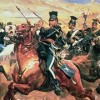
Martin Danahay “‘Valiant Lunatics’: Heroism and Insanity in British and Russian Reactions to the Charge of the Light Brigade”
The charge of the Light Brigade has always elicited ambivalent responses from eyewitnesses. Even though he was writing at a remove of time and distance from the action, Alfred, Lord Tennyson’s poem echoes the conflicted reactions of both British and Russian witnesses who characterized the charge both as heroic and an act of insanity. Tennyson’s polyvocal term “wild” in particular holds in suspense both admiration and the suggestion that it was an insane act, which resonates with accounts by Russians on the receiving end of the charge. Russian cavalry officers were convinced that their British counterparts were brave but deranged “valiant lunatics” after witnessing the charge. Both the British and Russians had difficulty in coming to terms with this incident, as they did with the Crimean War as a whole, because it was neither wholly a victory nor defeat for either side. As a result, even monuments to the Crimean War such as that in Waterloo Place or those in Sevastopol attest to loss as much as victory, and like the charge of the Light Brigade itself represent heroic failure.
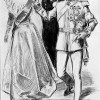
Nicholas Daly, “Anthony Hope’s The Prisoner of Zenda (April, 1894) and the Rise of Ruritanian Fiction”
Anthony Hope’s bestseller of 1894, The Prisoner of Zenda, inspired a subgenre of adventure romances set in imaginary, semi-feudal European countries, of which Ruritania is the original. English and later American protagonists stumble into plot-driven narratives that usually feature some combination of schemes against the throne, doubles or mistaken identities, swordplay, and love at first sight. Since the 1890s, Ruritanian backdrops have been reworked for a variety of purposes, from Balkan spy novels, to interwar operetta, to Cold War satires, in such fictional territories as Ixania, Krasnia, and Grand Fenwick.
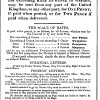
Susan Donovan, “How the Post Office and Postal Products Shaped Mid-Nineteenth-Century Letter-Writing”
In an age of electronic communication it is easy to forget the vital role that letter-writing played in people’s everyday lives in the nineteenth century. Critical attention has tended to focus more on the communicative function of letters than on what is often considered as the more mundane material aspects of letter exchange such as the postal service or the type of stationery used. This article explores the impact of mid-century postal reforms, improved transportation and new postal products on the letter-writing practice and epistolary relationships of Arthur Hugh Clough. My reasons for making Clough the central case study of this piece are two-fold: firstly, because of the large body of correspondence that exists between him and his American literary friends over the period of the mid-nineteenth century (c.1847-1861); and secondly, Clough’s interest in, and innovative use of the epistolary form in his poetry. The article underlines the significance of the postal revolution for Clough’s life and work, which can hardly be overstated. The greatly improved transatlantic mail service enabled him to keep in regular contact with his closest friends and publishers and to send them, over a period of several years, all the revisions and additions to his most important work: Amours de Voyage, published for the first time in the US in 1858; his acclaimed translation of Plutarch’s Lives (1859) and the definitive edition of his collected poems, published posthumously in the USA in 1862. The article also highlights instances where material circumstances—the curtailment of the transatlantic mail service, or lost and delayed letters—had an adverse effect on Clough’s correspondence and on his publishing projects. On this point, I draw parallels with Clough’s epistolary poetry—most notably Amours de Voyage—whose form and plot clearly illustrate the importance he attached to the medium of correspondence. The article also demonstrates Clough’s awareness of the role played by postal products in the construction of an “epistolary self”—another aspect of materiality that is reflected in his creative work. Clough is the central figure of this study but I have widened the focus in some places to include some apposite quotations from the Brownings’ correspondence and Carlyle’s letters to demonstrate the far-reaching effects of the material aspects of letter-writing on the correspondence culture of the time.
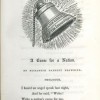
Denae Dyck and Marjorie Stone, “The ‘Sensation’ of Elizabeth Barrett Browning’s Poems before Congress (1860): Events, Politics, Reception”
Elizabeth Barrett Browning’s Poems before Congress paradoxically addresses a political event that never took place: a meeting of European powers to discuss the “Italian question” planned for January of 1860. Nevertheless, the collection addresses several momentous historical developments, including the Second Italian War of Independence in 1859, the intervention of Napoleon III of France in the Italian struggle, and the international conflict his intervention precipitated. Indeed, the book’s publication and the sensation it created in themselves constitute a plurality of events, since the collection appeared under differing titles in England and America and encountered differing responses in each country. Contrary to the still dominant critical view that the volume was almost universally denounced, its reception was shaped by diverse locations, shifting chronological contexts, and conflicting political affiliations. Close analysis of the reviews underscores the importance of these wider contexts, which influence what otherwise appear to be primarily literary or aesthetic judgements. At the same time, analysis of varying responses to not only “A Curse for a Nation” but also “Napoleon III in Italy” and other poems in the volume demonstrates a number of recurring points of contention. These include the collection’s title, the politics of interventions across national borders, English liberalism, the nature of democracy, cosmopolitanism versus nationalism, women writers in relation to politics, poetic form, and, most of all, EBB’s representation of Napoleon III—the issue that is front and centre in most of the 1860s reviews and that shaped, in turn, reactions to all the rest.
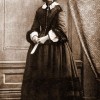
Lara Kriegel, “On the Death—and Life—of Florence Nightingale, August 1910”
This essay examines the death, and the life, of Florence Nightingale, the great nursing heroine of the Crimean War. An eminent Victorian, Nightingale passed away at the ripe old age of ninety in 1910, at a time when Britain was witnessing great internal strife and facing looming international tension. By that moment, the Crimean War was a thing of the distant past. Even so, Nightingale’s death served as a national tonic. It allowed mourners to rekindle the myths of Nightingale’s lifetime that had unified a ravaged nation in the wake of the Crimean War. Nightingale’s most important reforming efforts, which included nursing education, army improvement, and sanitary reform, both in Britain and in India, would postdate the Crimean War. However, the image of a young Nightingale ministering to the troops in the Crimea would remain the dominant one, not just in her life, but at her death as well. As it assesses the death and life of Nightingale, this essay focuses on two moments of celebrity and mythmaking in the long career of the heroine: the making of her legend in the Crimea and its resurrection at her death. It follows earlier literature, both generated during the nineteenth century and written by those who study it, establishing Nightingale as the avatar of Victorian womanhood. Accordingly, it seeks to understand Nightingale’s passing as a belated death knell to the Victorian age.
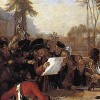
Frederick Burwick, “18 June 1815: The Battle of Waterloo and the Literary Response”
Although Europe had celebrated the end of the Napoleonic Wars with the defeat of the French armies and the abdication of the emperor on 11 April 1814, Napoleon escaped and again rallied his troops against the British and Prussian armies. His defeat at Waterloo on 18 June 1815 was the final battle with heavy losses on all sides. The extensive response in the British press was unprecedented. In addition to several military reports of the battle, many civilian eye-witness narratives also appeared. Memoirs, histories, and biographies added to the prose accounts. With contributions from Lord Byron, Sir Walter Scott, Robert Southey, William Wordsworth, and many minor authors, the poetry included both celebrations of the victory and lamentations over the loss of lives. Theatres, too, brought forth numerous spectacles and melodrama. Londoners were also treated to several exhibitions and panorama displaying scenes from the battle (Favret 8-12).
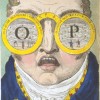
Terry F. Robinson, “National Theatre in Transition: The London Patent Theatre Fires of 1808-1809 and the Old Price Riots”
The years 1808-1809 mark a major period of transition in English National Theatre. In the space of just a few months, London’s two patent playhouses—the Theatres Royal Covent Garden and Drury Lane—burned to the ground. The devastation was total and complete. This article tells the story of the two theatre fires and explores their economic, political, and cultural repercussions, direct and indirect, including the reconstruction of Covent Garden and Drury Lane, the Old Price Riots, and the career dénouements of Richard Brinsley Sheridan, John Philip Kemble, Sarah Siddons, and Dorothy Jordan. In the process of providing a historical and graphic overview, it proposes that the London Theatre fires of 1808-1809 not only created significant professional and financial turmoil but also helped to engender a shift from an eighteenth-century to a nineteenth-century theatrical paradigm.
